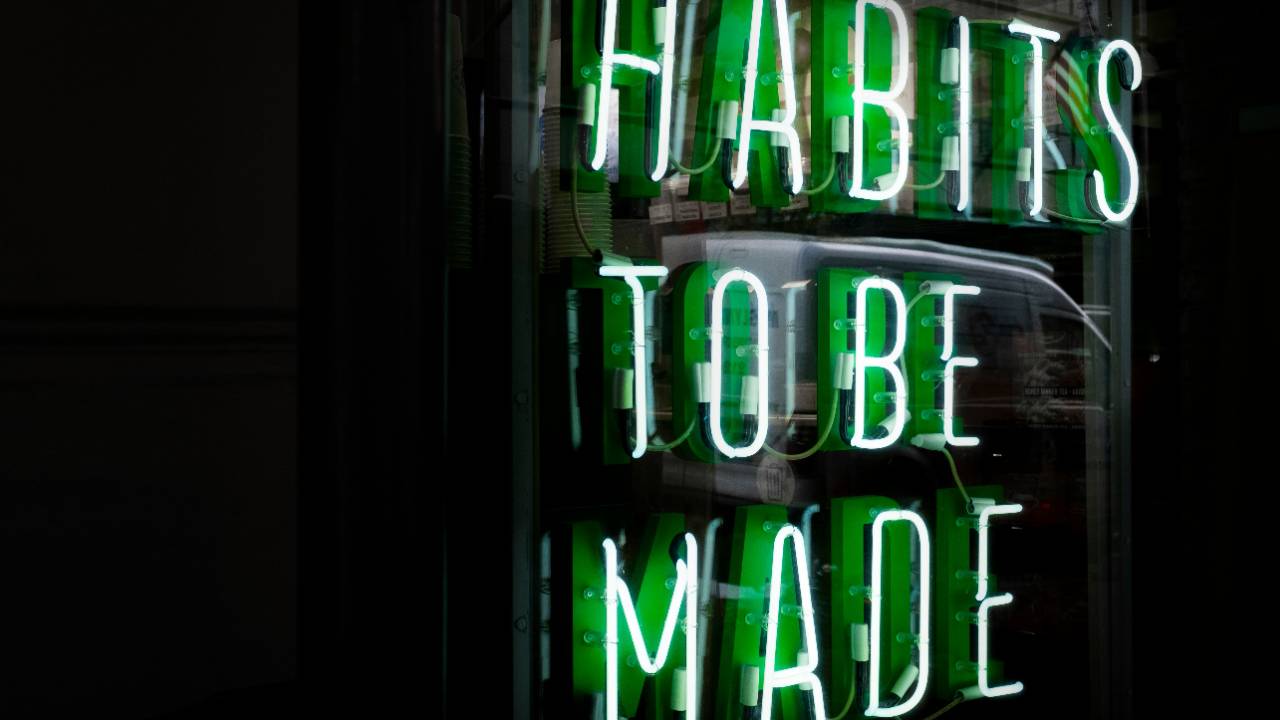
Breaking Habits To Build Better Connections with our Dogs
Apr 09, 2025Living with dogs often means our lives are woven together with daily rituals - some helpful, others less so. These habits might be as simple as clipping the lead onto your dog’s harness, putting their food into a bowl, or walking the same route each day. They’re so ingrained that we often move through them on autopilot - have you ever fed your dog twice by accident and only realised afterward?
Habits, by design, are meant to save mental energy. They allow our brains to focus on more important decisions and tasks. For both us and our dogs, habits can also provide structure and predictability. The consistency of our habitual movements can feel safe, even comforting. For our dogs, it can be especially reassuring - they learn that putting on a harness means it's time for a walk, or you saying “be back soon” means they can rest easy, knowing you’ll return.
But what happens when habits form around fear or stress?
Removing Tension from your Dog's Lead
Let’s say your dog reacts, in some form or another, to other dogs on walks. Over time, you may have developed the habit of tightening the lead whenever another dog approaches. You’re trying to feel more in control, but your dog feels that tension - literally and emotionally. That energy transfers right down the lead. Before long, both of you are stuck in a loop: dog sees dog, you grip the lead, your dog reacts, and repeat.
This is a classic habit loop: trigger - action - reward. In the case above, the trigger is seeing another dog, the action is tightening the lead, and the reward could be a small sense of control you felt through the tight lead in the situation. The same kind of loop might apply to your dog: they see a "threat", react by barking or lunging, and get rewarded with space or a sense of relief when the other dog has gone. Both of you are acting out of habit, not intention. Both of you are having to experience stress when you’d prefer to enjoy calm.
Why do we default to habits?
The challenge is that the habits we adopt most easily are reinforced by immediate gratification - some form of reward. And as humans, especially under stress, we default to what’s familiar. That’s why we reach for chocolate, pour a glass of wine, or 'doom scroll' (as my partner calls it) on our phone after a hard day. It’s not that these are 'bad' things - it’s that they’re automatic. But these can become 'bad' for us when we start to do it more often or feel there's no alternative option.
Can you teach an old dog new tricks?
Good news - change is possible. Both human and canine brains have something called neuroplasticity - the ability to form new connections, learn new behaviours, and literally rewire ourselves. Yes, even old dogs (and humans) can learn new tricks.
But, we can't just stop a habit. Telling yourself "don’t pull the lead", or "don’t yell", or "don’t feel anxious" is simply not going to work. Our brains are action-driven. The better approach is replacing unhelpful habits with more intentional ones.
So what does that look like in practice?
Let’s return to the example of the lead. Instead of gripping tighter when another dog approaches, try loosening your end. Use your breathing to slow your body, reducing your stress levels by balancing your oxygen intake. Gently stroke the lead with your fingers to change how the lead feels on your dog’s body in this situation - taking that pressure away and replacing it with a different sensation. Look directly at something in the environment you’d rather walk towards - a tree, a lamp-post, or simply an area of space. Direct your energy that way.
Touch and language are also powerful tools. We often reserve cuddles for the sofa, forgetting that physical contact can help ground both dog and human during walks. If your dog is comfortable with touch, stop and enjoy some calm strokes mid-walk as this can release oxytocin - the 'love' bonding hormone - and bring stress levels down. And when it comes to language, simplicity and tone matter more than quantity. Dogs process tone emotionally. So keep your words calm, consistent, and clear.
Rethink the way you view the walk itself. It doesn’t have to be just about physical exercise. It’s a moment to breathe, to observe, to connect. Try slowing down and really watching your dog. What do they choose to engage with? What brings them joy? What do they avoid? By observing these things without judgment, you’re stepping out of habit and into awareness.
We can then push our focus to the glimmers around us - moments of joy or feelings of awe in response to the world around us. The colours of changing seasons, the way your dog gets excited when it finds a treasure on a walk, the call of a bird - it might all sound a little "woo" but when we start to look for glimmers instead of triggers on our walks it can make a huge difference in how safe and relaxed we feel.
Changing habits - especially the subconscious ones - takes time. It takes patience. But when we begin to shift from autopilot to intentional connection, we give ourselves and our dogs the opportunity to grow. To break out of fear-driven patterns and into trust. To move from reaction into relationship.
So take a moment today to pause. Breathe. Notice your own habits - and your dog’s. Then choose one to change, not by stopping it, but by replacing it with something that feels better. Something that feels more like the kind of connection you and your dog deserve.

